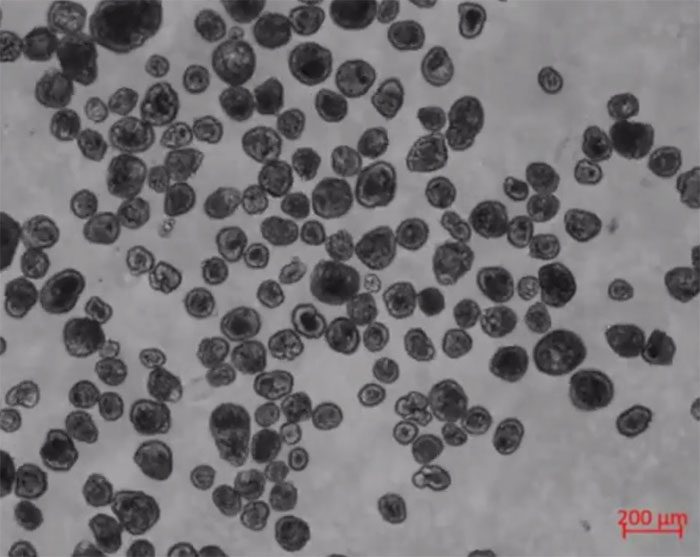Scientists Create Tiny Living Robots from Human Cells That Can Move and Potentially Help Heal Wounds or Damaged Tissue in the Future.
How the anthrobot moves. (Video: Phys.org)
A research team at Tufts University and the Wyss Institute at Harvard University has named their new robot anthrobot. This creation builds upon prior work by some team members who developed the first living robot called a xenobot from stem cells derived from African clawed frog embryos (Xenopus laevis). Michael Levin, a biology professor at Tufts University’s School of Arts and Sciences, and colleagues published their new findings on November 30 in the journal Advanced Science.
The scientists used adult human cells taken from the trachea of several anonymous donors of varying ages and genders. They selected these cells due to their relative ease of access post-COVID-19 and a characteristic they believed would enable the cells to move, according to Gizem Gumuskaya, a postdoctoral researcher at Tufts. The tracheal cells are covered in tiny hair-like structures that sway back and forth, helping the trachea push tiny particles out of the airways. Previous research has shown that these cells can form organoids, clusters of cells widely used in scientific research.
Gumuskaya experimented with the chemical composition in the growth conditions of the tracheal cells and discovered a way to encourage the hair-like structures to point outward on the organoids. Once she identified the right substrate, the organoid began to move after a few days, with the hair-like structures acting like paddles. “Nothing happened from day one to day six. Around day seven, there was a rapid transformation. It looked like a flower blooming. The hair-like structures popped out and pointed outward. In our method, each anthrobot develops from a single cell,” Gumuskaya explained.

Anthrobot moving in different ways.
This self-assembly mechanism makes the robot unique. While many other scientists have created biological robots, these typically require manual construction by molding and implanting cells. Anthrobots, however, differ in this regard. Some are spherical and covered in hair-like structures, while others resemble a ball with uneven hair coverage. They move in various ways; some robots travel straight, some move in tight circles, and others remain stationary while swaying. They can survive for up to 60 days under laboratory conditions.
The experiments described in the latest research are still in the early stages, but the goal is to understand whether anthrobots can be applied in medicine. The research team is investigating whether anthrobots can crawl over human neurons grown in petri dishes and be “scratched” to simulate injury. They were surprised to observe that anthrobots promoted growth in areas of the neurons that were damaged, although the healing mechanism is still not fully understood.
Falk Tauber, a researcher at the Freiburg Materials Interaction and Biotechnology Center at the University of Freiburg, commented that the research lays the groundwork for future efforts to use biological robots for various functions. He noted that the ability to create them from patients’ own cells reveals diverse applications both in the laboratory and eventually in the human body.
According to Levin, anthrobots raise no ethical or safety concerns. They are not created from human embryos or genetically modified. They cannot survive outside specialized environments, have a lifespan of only a few weeks, and appear to biodegrade.




















































